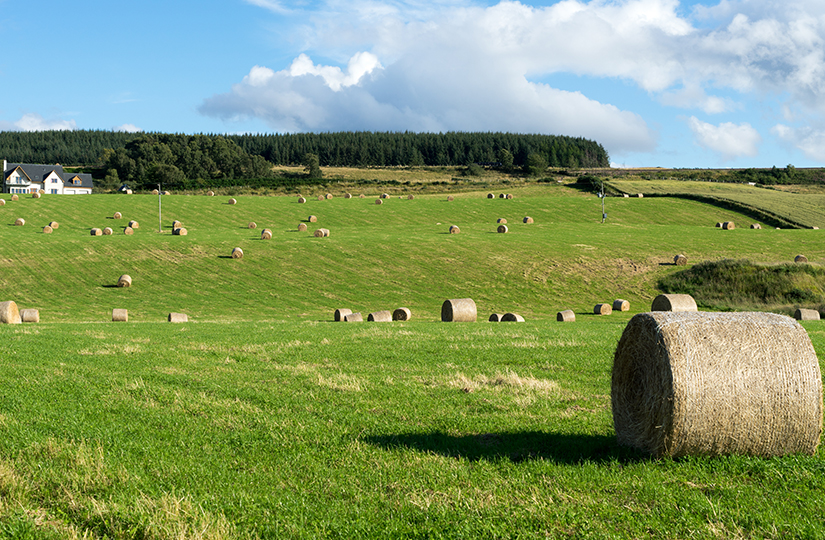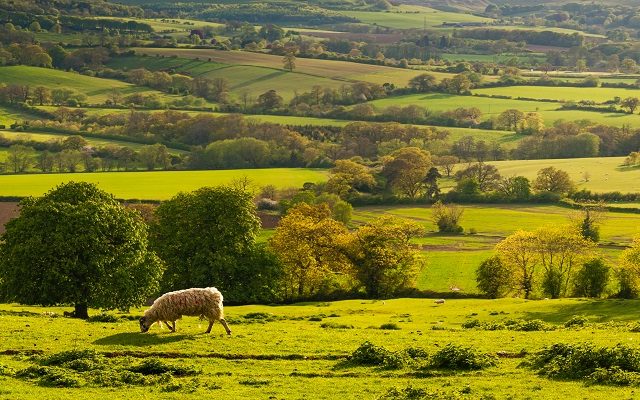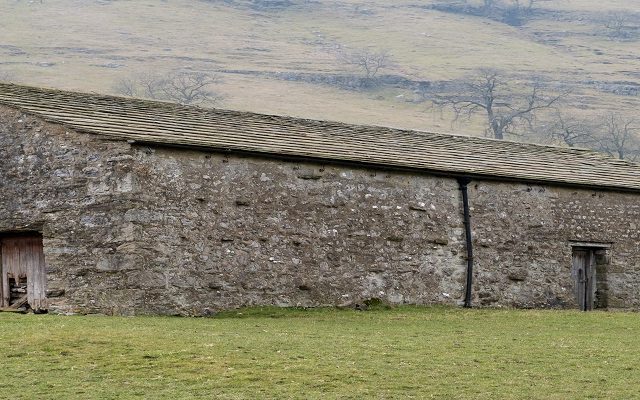Scotland consults over shape of new Agriculture Bill
The Scottish Government has published a consultation on a new Agriculture Bill for Scotland.
The introduction says the Agriculture Bill will provide Scotland with a framework ‘to support and work with farmers and crofters to meet more of our food needs sustainably and to farm and croft with nature’.
The government says the key aims of the Bill are to secure the delivery of:
- high-quality food production
- climate mitigation and adaptation
- nature restoration
- wider rural development.
The biggest changes outlined in the document include a new four-tier system of farm payments and the modernisation of agricultural tenancy legislation.
But while the 57-page document does offer some new information about how producers are likely to be supported in the future – with the direction of travel welcomed by Scottish Land & Estates (SLE) which says it aligns with its thinking – other farm leaders have expressed frustration about the lack of precise detail provided.
For example, the section on farm payments talks about funding being available for farmers making greenhouse gas reductions and engaging in nature restoration, but without giving a steer on what the requirements might look like in practice.
Large sections of the consultation focus on making sure the government would have the enabling powers to introduce measures at some point in the future, or to ensure that existing arrangements, for example to deliver rural development funding, can continue.
The consultation closes for responses on 21 November 2022.
Future payments
The Government has said its approach for payments to farmers is to have a system that aligns with the new EU Common Agricultural Policy (CAP) but doesn’t necessarily follow the rigidity of how payments are distributed.
It sets out plans for a four-tier system of payments.
Tier 1 and 2 would sit under the umbrella of direct payments and be available to everyone eligible to claim them, to give farmers security of income.
Tiers 3 and 4 would be indirect payments and would feature an element of competitiveness.
Tier 1 ‘Base Level Direct Payment’
This is proposed as a baseline support payment to active farmers and crofters for food production and land management, if they meet some essential standards.
Eligibility criteria might include:
- Producing a Whole Farm Plan – this might include a land management plan, carbon audits, animal health and welfare declarations etc.
- Following cross-compliance regulations
- Following greening measures
Further details about what the eligibility criteria will look like will not be available until secondary legislation is brought forward.
Tier 2 ‘Enhanced Level Direct Payment’
Payments under this tier would be available to farming businesses which deliver additional outcomes such as reducing greenhouse gas emissions, nature restoration and enhancement, and high business efficiency.
The aim would be to give producers an added incentive to be more efficient, incentivise sustainable and regenerative farming practices, and improve business resilience.
Tier 3 ‘Elective Payment’
Following on from Tier 2, payments under Tier 3 would require farmers to deliver some targeted measures for nature restoration, innovation support and supply chain support.
This will support those in the industry wanting to gain or maintain knowledge and skills required to manage land sustainably. It might, for instance, offer targeted support for particular species or habitats, support conversion to alternative forms of agriculture such as organic production, and encourage innovation.
It is likely that Tier 3 will have some location-specific payments to enable support to be focused on rural communities.
Tier 4 ‘Complementary Support’
Tier 4 would be more specialised in that it would provide payments for advisory services, delivery of continuous professional development, support for tree planting and woodland management, peatland restoration etc.
It is also mentioned in the consultation that there could be ‘voluntary coupled support for beef and sheep sectors’.
The Bill would allow for flexibility to weight payments through front-loading, tapering and capping of payments should ministers wish to do so. Mechanisms to allow ministers to support the industry with crises payments if there are exceptional or unforeseen conditions are also suggested.
Modernising agricultural tenancies
There is a detailed section on modernising tenant farming legislation, with proposals that could lead to significant changes in terms of tenants’ rights to engage in non-traditional activities such as tree planting. The government’s vision is to enable tenant farmers to play a leading role in addressing climate change and biodiversity loss.
Agreement to diversification
Currently a tenant farmer requires their landlord’s agreement before they undertake diversification activities on their agricultural holding, which it is argued can be a barrier to allowing them to take action to support biodiversity, adapt to and/or mitigate climate change and make their farming business more resilient.
The Bill suggests that what is an acceptable diversification should be redefined by Scottish Ministers. The Tenant Farming Commissioner could issue guidance on this to help tenants and landlords to understand this change.
Waygo and Schedule 5 of the Agricultural Holdings (Scotland) Act 1991
The Government proposes to update Schedule 5 of the Agricultural Holdings Act 1991 so the value of any climate change mitigation and adaptation investment would be considered during the process of waygo, when an agricultural tenancy comes to an end. This would encourage tenants to invest in such measures knowing that the value of any improvements would need to be reflected in the sum paid to them by their landlord.
The government also wants an enabling power to be able to further revise Schedule 5 in the future, so that tenant farmers are not unfairly disadvantaged compared to owner occupier farmers and crofters.
It suggests the introduction of a legally binding timescale to conclude the process of waygo, including a compensation payment to be made to the other party. The lack of a timescale can currently put tenants and landlords in financial difficulties if they are waiting on a compensation payment for a long period of time.
Amendment to the rules of good husbandry and good estate management
It is proposed to revise and update the rules of good husbandry and good estate management, as they have not been amended since they were defined in the Agricultural Holdings (Scotland) Act 1948.
The goal would be to enable tenant farmers and their landlords to undertake a wider range of activities on the land, ‘to enable them to meet future global challenges such as food production, biodiversity, and climate change’.
This would enable all activities to be covered by legislation, rather than tenants having to amend their leases on a case-by-case basis to allow them to undertake certain activities.
Revised approach to Rent Reviews
The rent review process would be modernised by repealing the rent provisions in the Land Reform (Scotland) Act 2016 and by introducing a new rent calculation.
This will include balancing of the following three core elements and factors specific to the lease:
- Comparable rents for secure or fixed duration tenancies
- Assessment of the earnings potential by means of a farm budget; and
- Consideration of economic outlook for the next three years
Resumption
The Bill proposes a review of the way resumption valuations are calculated where a landlord serves notice to terminate a lease of all or part of an agricultural holding on grounds of redevelopment.
The current valuation process compensates the tenant for the costs associated with their removal from the land but has no scope for enhancement related to the future land use by the landlord. It asks whether an alternative valuation formula might be a fairer approach.
Climate change
The consultation says agriculture needs to reduce its emissions by 31% from current levels by 2032, so proposes the Bill should include measures to allow future payments to support climate change mitigation objectives.
It is also seeking views on whether mechanisms should be included to make payments conditional on meeting climate change objectives and to support integrated land management, such as peatland and woodland outcomes on farms and crofts, in recognition of the environmental, economic and social benefits that it can bring.
Animal health, welfare and plant health
There is an aspiration for continuous improvement in animal health and welfare to better protect and enhance animal health and welfare.
The main proposals include:
- Establishing minimum standards for animal health, welfare and biosecurity as a condition to receive payments
- Making funding available to support improvements in animal health and welfare, and biosecurity standards, beyond legal minimum standards
- Providing powers to collect and share livestock health, welfare and biosecurity data
- Providing powers to support the protection and improvement of plant health, via plant gene banks to monitor and better control plant health disease spread, aiming to increase resilience to outbreaks.
Agri-food sector
Grants could be made available to support the agri-food sector and bodies related to the agri-food sector in connection with:
- Agri-food sustainability
- Agri-food efficiency
- Agri-food co-operation
- Agri-food industry development
- Agri-food education
- Agri-food processing
- Agri-food marketing.
Rural development
The Bill includes measures to continue to provide support for rural development, including where land managers and communities are undertaking and supporting economic activity related to land management including, but not limited to, agriculture.
Scottish Agricultural Wages (Fair Work)
The Scottish Government proposes that the real Living Wage (rLW) and Fair Work First (FWF) conditions are applied to all agricultural workers.
This would take the wage for a worker over 18 to £9.90/hr, rather than the current £9.50/hr, as set out by the National Living Wage and Agricultural Wages Scotland.
Contact Mary Munro (Farming) or Matthew Havers (Land Management Department) if you would like to talk further about the implications of the proposals.






